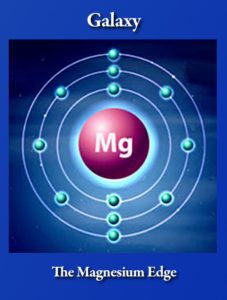An introduction to the magnesium industry, and the current status of its development in China, presented at the international conference on Automobile Lightweighting in Atlanta, Georgia by the London Business Conferences Group.
Michael North, chairman of the China-US joint venture, Galaxy Trade and Technology, talks about three anomalies — geological, industrial and elemental — and explains how their intersection spells economic opportunity.
He outlines the principles that make magnesium alloys of interest as a new class of industrial metal, complementing steel and aluminum.
The international audience is introduced to Yulin, in Shaanxi Province, where much of the magnesium industry is centered. Mr. North presents CEO Dong Yuming, and communications expert Ma Mengjia, and sets the stage for a technology presentation by the Chinese scientist, Yang Yuenshang, of the Institute for Metals Research in Shenyang.
Following this introduction, please see:
Magnesium Technology Seminar
Transcript:
This is a very special, select group. In English, we say “Hello.” In Chinese, we say “Nihao.”
I want to introduce you to a joint venture between China and America. We are bringing together some of the best people: scientists, business people, investors and traders from both countries.
We’re drawing in European resources as well, with the mission to make magnesium more available, more affordable, to understand its properties better and to adapt magnesium to the industrial economy.
I first learned about magnesium sixteen months ago when I went to Yulin, where Mr. Dong, our CEO, works.
I learned a couple of very interesting anomalies. The first is a geological anomaly. For some reason, hundreds of thousands or millions of years ago, the earth was bent and curved in such a way that coal and magnesium were co-deposited in the same rocks, near the surface.
That’s the first anomaly: most of the commercially mineable magnesium in the world is concentrated in a small area in north central China. Nearly 70% — I’ve seen estimates as high as 80% — of the commercially mineable magnesium in the world is right there, in a small area maybe 500 miles radius.
Magnesium is a common element; it’s the seventh most common element in the earth’s crust and in the waters. But for it to be common is one thing; for it to be commercially mineable is another thing, to produce it in quantity. So that’s Anomaly Number 1.
Anomaly Number 2, you have the emergence of China as an industrial power, beginning in 1949, when the country was unified. They just celebrated their 70th anniversary as a country.
China, while it is ancient, is also a very young country. They decided to come up the curve of industrial development as quickly as they could and catch up with the rest of the world. They had a lot of catching up to do.
Part of the fuel that made China’s rise possible was an abundance of coal, easily mineable, economically extractable. China became an industrial superpower because of its use of hydrocarbons. They paid a significant environmental price for doing it, and everyone is happy that China is now fully on the path to being a completely modern economy.
That coal out of Shaanxi Province was part of the fuel that made China’s rise possible. When they realized, about ten years ago, that coal was not good for the total health of the economy, for planning of the future, for the health of the environment and the people, they decided that they were going to start building down coal. They started using less coal; they started closing some coal mines, laying off mine workers. Now, over the past three years, China uses less coal each year.
You could call that an industrial anomaly; that has happened very few times. Although the rest of the world is going through a reassessment of how the energy is being used, China is doing it much faster, and in a much more directed way.
Now magnesium has the potential to be valuable. Before, no one really knew what to do with it; it had minor uses in industrial materials. Fifteen years ago, China decided magnesium is something we should pay attention to. “We have a lot of it, so what are we going to do with it? Can we make a business out of it?” And the answer was, “Yes. But it’s going to take some work.”
Mr. Dong has been in the middle of a resurgence of the magnesium economy. The third anomaly that came up was: magnesium sits in the middle between aluminum and iron.
It’s equally easy to combine with other elements. It tends to be stronger than aluminum and lighter than iron and steel. So, it has a potential role in the ecology of industrial metals.
Look at the symbol for magnesium — a two-dimensional rendering of a three-dimensional object. You know, if you are a chemist or metallurgist, this means that you can easily bond magnesium with a great many other metals. Those three prongs are at 135 degree angles to each other, so magnesium has a three-dimensional flexibility.
Now we’re in an economy where becoming lighter and maintaining strength is important; all of a sudden there’s a good reason to pay attention to a metal like magnesium.
Early this year, after nine months of due diligence between the American and Chinese counterparts, we formed a joint venture and got it financed. It’s the first approved joint venture between America and Chinese investors focused on magnesium. We have held just four or five public meetings and trade shows, press conferences and so on, so we wanted to be here today.
This is a short video about Yulin, just to break any concept you may have about Yulin; you have probably never heard of it. Has anybody here heard of Yulin City, in China? “No.” I think of Shaanxi Province as the “Utah of China” — topologically and geologically it’s quite similar. I think of Yulin as the Salt Lake City of Shaanxi, only with a lot fewer Mormons (laughter). It’s a very charming place, it actually has a larger population than Chicago, spread out around some hills.
It’s quite significant; they have put a lot of investment into infrastructure — roads, fibre optics, satellite control, they have a lot of people investing in alternative energy and great interest in magnesium and the new economy.
So, when we went in there and said, “We are interested in bringing magnesium to the world,” they said “OK.” The vice mayor met us and many other people in the public sector said, “If you need some help, we will help.” We have developed very warm relationships with the people; they believe in their families, the future of their communities and they believe in China reaching out to the world in responsible ways. I want to touch on that again, a little later.
These are some of the hills that contain the magnesium we’re talking about. We put together an alliance of about a dozen of the largest magnesium mines in the world. There is a network that provides us access to about 20% of the world’s magnesium.
We are able to produce significant quantities of high-quality magnesium, get it out to the world through a logistics supply chain through transportation companies like Maersk, and through alliances with banks to put together deals that make sense over the long term, with fixed prices, currency control and a 24-7 trading desk.
We are taking this on, all the way from the science to industry, to business and to a new ecology of relationships between the genius and energy of China’s business community, its people and the rest of the world. We are reframing the way that China has grown, with the help of so many other countries.
Now China is in a different position; they don’t need our help any more. We both need each other’s help, so it’s a different kind of business philosophy, a different set of research possibilities that you will see in the video, presented by one of China’s leading magnesium research scientists.
The Chinese Academy of Sciences: it’s like joining the NIH, DARPA, DOE other big US federal government agencies that fund research. They have established the Institute of Metal Research. Dr. Yang is one of the team leaders in that Institute and his speciality is magnesium; his sub-speciality is magnesium lightweighting.
Two days ago we had an extended interview with him in his offices in Shenyang where his Institute is located. It was two hours long. We boiled it down to 20 minutes of the essentials that we believe will interest those at this conference. We can also make the whole two hours available, along with the Powerpoints.
He has some very interesting observations about what magnesium is for, what he has been doing with it, where he thinks the challenges are, where he believes the newly established implications are.
I want to formally introduce you to Dong Yuming. He is the business and engineering leader of the company. He lives in the ancient capital of China, Xi’an, which is in Shaanxi Province.
Let me also introduce you to Ma Mengjia; she is a communicator, organizer, media person, and a translator from Shanghai, the biggest and in some ways the most exciting city in the world. There’s plenty of exciting cities, but Shanghai has a lot of brilliant people like Ma Mengjia and they make an impact.
We really want to forge productive commercial and scientific relationships with people at this conference.
In the video, you will see my wife, who is one of the organizers of Galaxy Trade and Technology Company, Zhou Xiaofang. She is a native Beijinger but also a US citizen. She is the glue that pulled together all these disparate people, talents and energies. She interviewed Professor Yang.


